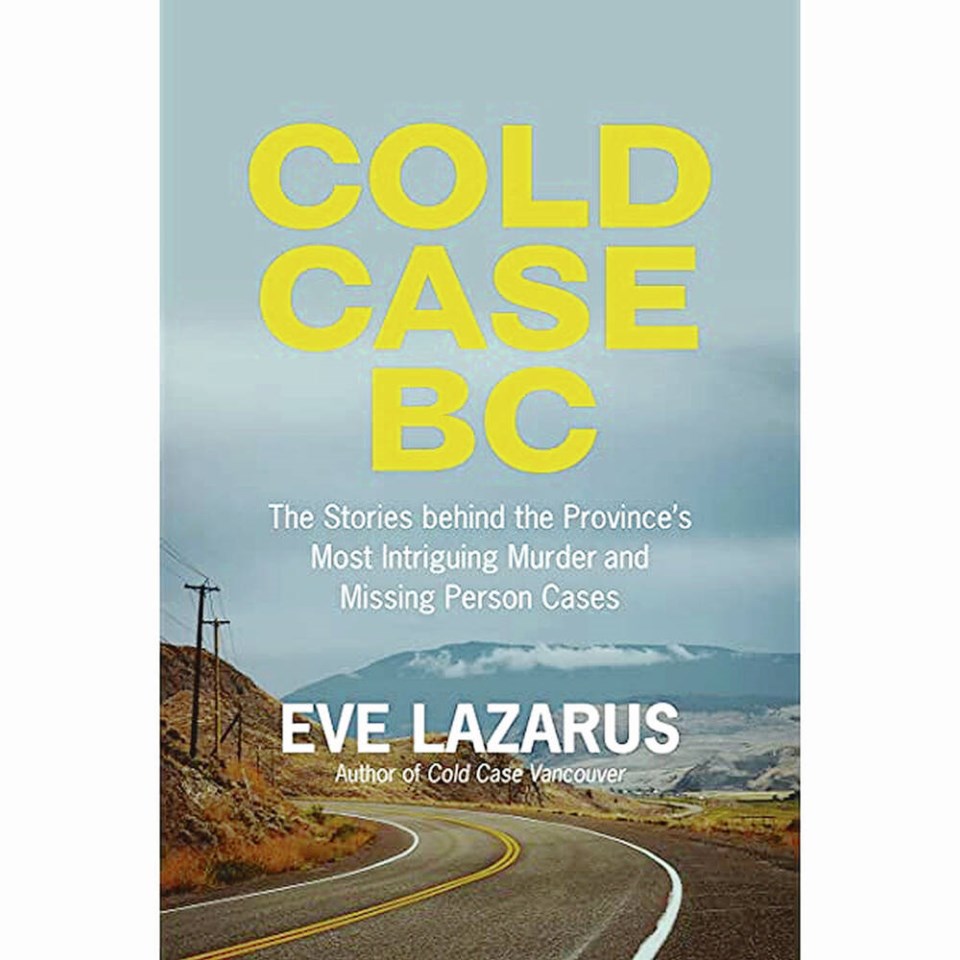Cold Case BC: The Stories Behind the Province’s Most Intriguing Murder and Missing Person cases
By Eve Lazarus, Arsenal Pulp Press
242 pages, $22.95
Reviewed by Dave Obee
We’ve heard some of their names so often, it’s hard to imagine a time when they were not what are indelicately referred to as cases gone cold.
On Vancouver Island, the names include Michael Dunahee, Lindsey Nicholls and Molly Justice, but there are many others, too numerous to count, even if the records were comprehensive enough to make a difference.
These are people who have been murdered by persons unknown, or who have gone missing — perhaps abducted, or perhaps a victim of an unfortunate accident. They might have chosen to disappear.
They left behind family members and friends whose lives no longer feel complete. They can’t, not with the lingering questions that might never be answered.
Beyond that, every major cemetery has buried people who could not be identified. At the time, it was impossible to connect the dots between the missing and the unknown, and it’s probably too late to solve the mysteries now.
But there is always a chance for closure — a chance to find answers, or bring a guilty person to justice. There is hope.
In this book, Vancouver author Eve Lazarus looks at several cold cases across the province, as well as a couple that were cold for decades before DNA technology made it possible for investigators to consider the cases closed.
Molly Justice and Myfanwy Sanders, two young women murdered in Saanich in the 1940s, are included here, as is Lindsey Nicholls, who went missing in the Comox Valley in 1993. Perhaps after all this time, the book will inspire someone to come forward with information, or even a confession.
Lazarus gives special attention to the women who have gone missing in northern British Columbia, the area that has become known as the Highway of Tears. She also deals with the remarkable 1989 disappearance from Prince George of the entire Jack family of four.
Great care must be taken when writing about cold cases. An author must be careful not to exploit a family’s grief while ensuring that the cases remain in the public eye. Lazarus has the right touch, a delicate approach to sensitive subject matter.
She understands that these cases are more than just files in police archives; they involve real people with real, continuing pain. Her commitment to helping the families is obvious.
Lazarus is no stranger to topics such as this. Among her nine previous books is Cold Case Vancouver, which was devoted to unsolved mysteries in that city.
She deserves praise for her work, as well as support from the police — and sadly, that support is not always there. She singles out the reluctance of the RCMP to help with her work, which is remarkable considering that her work might help the RCMP to do theirs.
It’s possible that some of the cold cases might eventually be solved through the use of DNA testing, which would involve matches to family members of the missing or the murderers. As more individuals dive into genetic genealogy, the pool of potential matches grows, and an answer could finally be found.
That is what happened with the murders of Tanya van Cuylenborg and Jay Cook of Saanich, who disappeared in 1987 after heading to Seattle for a few days. Three decades later, a DNA match helped find the person behind the murders.
DNA matches also helped police identify the bodies of two children found in Stanley Park in 1953. Those children, known as the Babes in the Woods, were finally given names this year.
Lazarus includes these stories in her book, showing that the passage of many years will not necessarily mean that a case has to stay cold forever.
It’s important to keep that in mind as you read this book. Any one of you might know something that could solve one of these cases, or other mysteries that have been lingering for far too long.
The families and friends of the missing and murdered deserve a chance at closure.
The reviewer is the editor and publisher of the Times Colonist.

-thumb.png;w=120;h=80;mode=crop)

